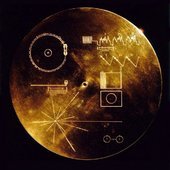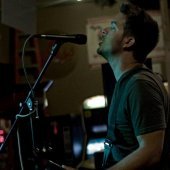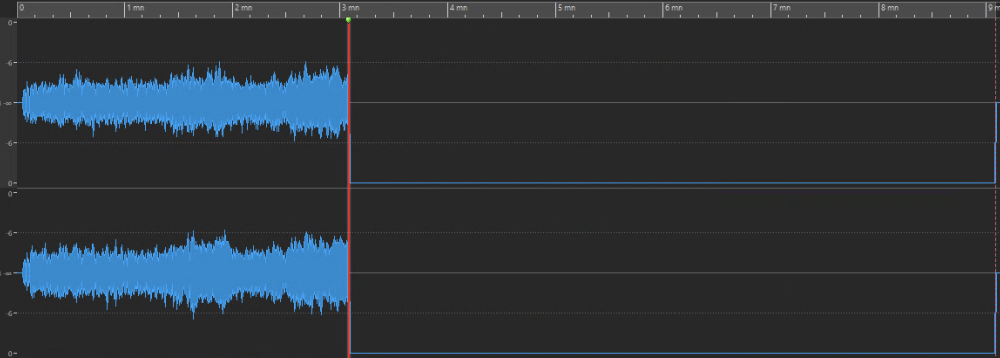Search the Community
Showing results for '"drop out"'.
-
What could be the issue for audio dropout code 2 and 5 often while recording 2 instruments together? I don't use sonar or nest. It's the Windows one. Configuraion - AMD Rysen 5 6 code 3.6 ***** with vega readon graphics 20 GB ram 120 GB C drive
-
Hello , I've started a new project and only about a 1/3 rd of the way thru it. Glitching pretty bad and after a few S.O.S. deletes and retakes the timing is getting behind on my latest take. Pretty lean project with a drum synth with seperate outputs and 5 guitar tracks 3 of them with amp sim. (TH3). I Rarely Ever get a glitch or drop out on my lean projects with my Lenovo SSD / I5 /16 gig ram, Tascam interface with ASIO. I've Never checked my cpu usage or adjusted buffer settings. No need to.. I opened the task manager and saw the cpu at 100% with the project open and idle. I bypassed All fx with little or no change. Froze all the tracks with no change. I don't have any new plugins that haven't been tested or used on other projects. I opened an older Large project and my cpu was sitting around 20%. Did a "save as" with the same results. I'm afraid I won't be able to complete this one and there is no way I can start over. Any suggestions or trouble shooting ideas to complete this one would be nice.. Thanks .. mark This reminds me of recording in XP. Thanks .. mark
-
hey subvibe, thanks for listening and commenting. the mix isn't thin, or overcompressed, the compression i use is very transparent, and i put across in multiple locations so there's never a buildup.. but the mix could be off. i remixed it, and brought the vox up a bit, and changed the eq on it, so it sits in a different range of eq. complemented that on the acoustic guitars. i'll tell you, it IS a big difference when the opening electric rhythms are playing the dual slide parts, but then drop out when the vox comes in... so i changed that part of the mix too, and i think it should sit better now.
-
Hi Cakewalkers Im testing new interface and facing some drop out issues. What I have noticed is that when a dropout occurs while recording (a one second cut off in audio) CbB is then glueing the gap and tries to go on with recording as it never happens. The glue point is sometimes good, stitch less and you would not tell that there was a cut in audio, but more often it is not prefect - has a pop in it and many times the audio clip is moved and thus out of sync with the rest ot the tracks. Anyway I don't want CbB to hide the audio cut - need to see exactly where and when audio drop out happened to pin point the cause. It happens on my both interfaces: Tascam US-144mkll with its dedicated ASIO driver latest version Steinberg UR44C - with Yamaha Steinberg USB Driver latest version To explain: because the dropouts are happening very rarely its a time (hours, days) consuming task to spot them. Therefore I just leave the recording session ON when I go for lunch, or for a nap, or anything and then when I come back I analyse the recorded waveform to check if the audio drop out happened. I was fooled till this day that I have no more dropouts because the audio waveform was constant and with no cuts, and assumed that the issue is gone. Only today a drop out happened when I was recording my tracks! I was wrong and wasted many days because I didn't know then that CbB is hiding these cuts!! I still have drop outs but it again takes days to spot them - I would have to sit hours while testing it by recording and listening for the cuts - this is the only way now that i have. I have no time for that, and I cant do it while working - recording serous stuff because I cant allow any drop outs while recording material. I whish I could leave recording ON leave it and then just check the waveform. It happens on my both interfaces: Tascam US-144mkll with its dedicated ASIO driver latest version Steinberg UR44C - with Yamaha Steinberg USB Driver latest version SPECS: Windows 11 Intel(R) Core(TM) i7-8665U CPU @ 1.90GHz 2.11 GHz 16.0 GB RAM SSD 1TB
-
I just got a new recording computer build just for recording, windows 10 home with an apollo 8x interface, and have updated versions of everything. As I am adding more plugins I am getting one second audio drop out more and more but it doesn't appear to be the CPU. Even when nothing is playing it still does it as you can hear the static of hiss from the signals drop in and out. If I shut Cakewalk down the hiss coming over ht the monitors long longer drops in and out. I will paypal anyone who solves this problem $100. Here is a fast video I made to show the issue. I cannot do screen grab recording on Cakewalk so I had to use a video camera, apologies. SOLVED. It was the Arturia Analog Lab V plugin, as well as other Waves synth plugins causing this issue. SOLUTION from Sock Monkey: Options are Freezing which then the synth is now an audio track and the synth is off line. The beauty of this is that you can still edit the midi by unfreezing and re freezing when done. Option 2 is Export the audio as Wave 48/ 32 which is what Cakewalk uses. To export the track as audio select the track then open the export advance dialogue and choose tracks Thank you, James
-

Do you use a plugin or phase align manually?
Cookie Jarvis replied to jesse g's topic in The Coffee House
I fix phase correlation issues with either iZotope Imager during mixing or with the Imager Module in Wavelab Masterrig. Phase correlation is very important to make sure a mono listening environment doesn't drop out. It also helps to balance frequency content. -
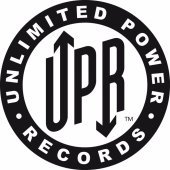
Random scans while playback or recording windows
Bruce Gombrelli replied to Bruce Gombrelli's topic in Cakewalk Sonar
Possible solution in the testing phase. It's windows search and Indexing. I removed all of my vst and cakewalk related folders, it still did it, but it was FAST and didn't cause and audio dropout. I added more folders to exclude and ran it tonight and saw the window twice but it didn't affect my work and cause a drop out, and was a very brief popup. I now set the search to manual (the service) and stopped it, I'm looking for it to completely stop (fingers crossed), I'll let you know. This is a BIG deal. I think a "folder" change (like maybe a changed temp file or whatever, is firing off an index). But wow, I can't believe such a fix wouldn't be all over the internet for Cakewalk users, I can't be the only person that has run into this. BUT maybe it might be because of WHERE I put my projects, I like to manage them on my desk under special folders (new projects, completed works, etc) so I excluded my entire C;\users\<me> directory from the search because it wouldn't let me drill into any desktop folders and exclude them. -
Troubleshooting needs to be a process of elimination as your issue could be caused by a few different things. Here's a few thoughts I would try. I said to Bypass ALL the effects as those could be the cause for different reasons. This eliminates things you might have missed like Pro channel modules. It could be a drop out that only happens at that point because something is taxing your system. Like an effect or a VST instrument. So increasing your buffers to around 520 might solve the issue. You have a new Audio interface and there's no telling if it will perform better than your old one. Example I was surprised to find my Motu interface would drop out at the same buffer setting that all my other interfaces didn't drop out. Does the Apollo have DSP processing? Turn that off if it does. Freeze the Midi instruments.
-

SOLVED: Short fast audio drop outs
Guest replied to Screaming For Attention's topic in Cakewalk by BandLab
You’re really the only one who can troubleshoot the problem because we would need the project and all of those weird plug ins you are using. I have over 400 plug ins and I don’t recognize anything there.😬 So first thing you try is you bypass all Effect in the Control bar module. If the cutting out stops it is a plug in. Now start turning them on / off until you find the offending plug in. From what you’ve said now I doubt it s outside of Cakewalk. Those tips are just to rule out other factors that are known to cause drop outs. A drop out is much more obvious. -
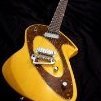
SOLVED: Short fast audio drop outs
Screaming For Attention replied to Screaming For Attention's topic in Cakewalk by BandLab
Saved project as TEST in C drive Saved project as TEST in D drive Started with C drive version 1. First. So it is NOT the Nomad Factory EQs. Deleted, closed project, open back up, exactly the same issues 2. Second. Deleted all Arturia Analog Lab V synth tracks. 99% reduction in the issue. Recorded a vocal track, which would always cause an audio drop out and message, no issues at all. So it is ALMOST all the Arturia Analog Lab V plug in, but not completely as there was one blip after 15 minutes of continuous play and adding vocal tracks. 3. Third. Trying to review the settings for the computer as Sock suggested. My guess now is that there is some setting or adjustment that has to be made to allow Analog lab to be used and to eliminate the sound drop spots. I have to go back and implement the suggestions for tuning the computer that Sock mentions. -
This is actually not possible in Sonar.. it automatically converts any imported audio to the sample rate of the project. It will maintain the bit depth however. A 44.1 /16 wave file becomes 48/16 if your project shows 48 in the transport. And MP3 or MP4 will also become 48 Wave and maintain what ever bit depth. New recordings will be at the project sample rate as well as the bit depth rate of your audio interface which is normally 24 and usually can’t be changed. This is not a limitation of your Daw but the audio interface hardware. I now have a Zoom interface that allows 16-24 and 32 bit. Interesting is that Cakewalk Next uses real time rendering and doesn’t convert different sample rates. You are warned that if you mix sample rates in a project you will be using CPU resources. Doubt anyone will realize this and be dropping zillions of different loops and wonder why they are experiencing drop outs. I found this out when I noticed that the stem separation feature returned 44.1 /16 Audio from a 48/24 project.
-
I am experiencing audio drop outs when playing back my mixes. It is never the same track. The midi instrument might drop for a couple seconds while later in the song it could be vocals or bass etc... There is also an issue with the audio sounding awful. It is hard to describe. Just sounds like junk. I have exported/imported the wav files into Ableton and everything sounds beautiful and no drops. I want to continue to learn and use Cakewalk but may need to switch if I can't figure out what is going on. Hardware: 12th Gen Intel i7-12700KF 3.6 GHz 32 GB RAM Focusrite 2i2 4th Gen Thank you for any help. I am beyond frustrated at this point.
-
Seems that they are about 25 years late to the show... They should have done that with Windows XP... Better late than never... But they would have had to pay licensing fees to Steinberg for use of their technology, perhaps they have made a deal with Yamaha for that... To me it seems that MS is just finally admitting that their Audio drivers really suck and always have for Real Time Audio... A point of interest to me in the post was this statement by Pete Brown... That is an understatement... The default Power Management Schemes in Windows 11 are all worthless... I even un-hid the "Ultimate Performance" plan and tried it on my system and can't work on a decent size mix without audio drop outs... The default "Ultimate Performance" plan Parks 15 out of the 16 cores of my CPU and only leaves both logical processors on CPU0 un-parked... The exact same is true of the "High Performance" plan... Both plans steer all hardware interrupts to CPU0 and overload it and the latency is un-godly, sometimes as much as 30 milliseconds... If I wanted a Single Core processor I would have bought one... The "Power Saver" plan actually performs the best on my PC for real time audio of all the default MS power schemes... The "Power Saver" plan, by default has all cores un-parked and I can work on the same mix with that plan that will not run without issue on either "Performance" plan... When I "Down Graded" my system to Windows 11 from Windows 10 I did a complete new install with a new hard drive and kept the Windows 10 installation completely in-tacked on its own hard drive... So the PC is now dual boot with both operating systems... The "Exact" same every thing, only difference being the operating system... I even copied over the power management scheme from Windows 10 to 11 using the Windows Power Plan Settings Explorer Utility and "could not" play the exact same mix using my Yamaha Motif XF6 by Firewire that plays completely without issue on Windows 10... I read in a post somewhere that MS change the "Thread Scheduler" in Windows 11 to accommodate the new Intel Processors and their efficiency cores, perhaps @Jim Roseberry could shine some light on that... So what I had to do with Window 11 that I didn't have to do on Windows 10 was assign my NVIDIA graphics card to it own processor core to get it out of CPU0 or CPU1... Anyone with a NVIDIA GPU running audio knows of their problem, even the gamers... I tried using MSI with the GPU but with Cakewalk running I would get the BSOD "DPC Watchdog"... I also set Interrupt Steering in the power plan to "Any unparked CPU with time delay" and a target load of 2%... I also set minimum unparked cores to %100 so Windows does not Park any cores... By doing that Windows more evenly distributes the hardware interrupts to all CPU's... So after doing all that and more tweaking I can run my Motif Firewire with no issues on Windows 11... The highest latency spikes I get are from the NVIDIA driver, sometimes around 350us but they are all on their own processor that is not used much by Windows or Cakewalk so they cause no problems...
-
Been away for a while, trying to write again but having trouble recording. This happens with new or previous projects (...including Chernobyl). I arm the track, switch echo from echo=off to echo=on. I see my guitar on the meters and I hear it but the needles and sound drop out when I activate the transport (play). All of the other tracks are fine everything is moving along except for silence on the track I'm recording on.
-

SOLVED: Short fast audio drop outs
Screaming For Attention replied to Screaming For Attention's topic in Cakewalk by BandLab
This is all good stuff, thank you for putting the time in to help. I don't use the tape his preset with the hiss in any songs, and I am not sure why the plugin comes with a preset that is so fuzzy. In fact, I am getting ready to spend a lot of money to make it stop.😄 I just chose the tape his preset to increase the hiss to the fullest amount so that it could be heard on my video. I needed the loud hiss so that you could tell more clearly when the drop outs came along. I am not a techy so I have to read the comments here and then search online to see what that all means. I do understand something else running would also use the audio driver, I just don't know what that would be. I only have cakewalk open when i record as i am in the habit of turning everything off to save CPU. Those quick silent clips happen at irregular intervals and not on a specific timing, but always around 5 to 10 seconds apart, sometimes the song will play for 20 or 30 seconds with nothing but then it starts again. I think it is either one of the plugins, or it is the sample rate somewhere that is not in sync with something else. The 44.1 vs 48 sounds like something that is effecting my computer. I will have to check that out. It's looks like it is an audio engine thing going on. -
I exported a 5 minute song out of Cakewalk Sonar. At the 3:04 mark the audio simply stops. The file it exports is 9 minutes long but it's should only be 5 minutes. Any thoughts on what causes this drop out. I have tried exporting multiple times. There isn't any plugin or track that kicks in right at this mark that could be hanging it up. This is a screen shot from Wavelab that shows the file.
-

Exported WAV file drops audio in Cakewalk Sonar
Promidi replied to tunesmithers's topic in Cakewalk Sonar
I would say if not familiar with end markers, then you would not have entered one. Also, I had another think. If it was an End Marker, you would not end with wave file data at zero after the drop out. The duration of the resultant wave file would be up to the time stamp of the end marker. You say that here isn't any plugin or track that kicks in right at this mark. However, are there any plugins at all in the project? What happens if you export with Track FX and Bus FX disabled? -
I have one word of advice. Purchase a Drum Kit that comes with a Midi driver. And hopfully it is Midi 2.0! Drums are a little different than playing a piano. Even a tiny bit of latency might bug you. Out of curiosity a few years ago I tested a bunch of my midi gear for what is known as "Midi Latency" Midi latency has nothing to do with Audio latency. That doesn't bug us unless we use input echo. Midi latency It is the delay in the data stream from the moment you strike a key or drum pad to the moment it will be recorded by your daw. Midi 1.0 standard is from like 1980. The data is serial so each event follows another. Look it up and you will see that the more information in the data steam the worse the latency might become. And yes the Midi driver makes a difference! There's a new Midi standard 2.0 and a lot of new devices support it. https://midi.org/midi-2-0#:~:text=Details-,Protocol,of the MIDI 2.0 Protocol. They have way better latency if you can find something. Anyways I tested this by simply placing a mike 1/2" away from a drum pad or a Keyboards key and recording both the audio and the midi event. Because I was using a good audio interface there was unmeasurable latency in the audio signal path. I tested about 8 different midi devices I had on hand. Some were USB midi, some were 5 pin. Take note that if using a 5 pin midi interface it will come with a proper midi driver. Audio interfaces that come with midi ports will also have a midi driver that is installed with your ASIO driver and software package. I was using a Motu M4. SO there's most always a midi driver involved unless you buy consumer quality gear. My Roland A 49 controller has both USB and 5 pin. It also had a Mdi driver that had just been updated. There was no difference in measured latency between the USB or the 5 Pin and both where the lowest of all my devices. it was around 3 ms. This would be expected as midi itself has around 2 ms delay. This is why it is inadvisable to daisy chain midi devices. My Yamaha drum kit is USB and comes with a Steinberg midi driver. It was around 6 ms. The worst results were from controllers that used generic midi drivers they were 10ms and one an Akia Synth station was 14 ms!! I think that the quality of hardware electronic and firmware might be involved somehow because as far as I know they all used the same Microsoft midi driver. Of note was vintage keyboards from the 80's using 5 pin had around 8ms of latency so once again must be firmware or hardware related. Anyways, I thought it best to explain that because even when using direct monitoring, there can be midi latency so the triggering of any VST drum kit will first be delayed by that. Therefore a drum kit with a proper manufactures Midi driver is important! There are not very many good reviews of the Sampson kits as far as using them as controllers go. Lots of fun for a little jam band. So in my case my ( made in 2013) Yamaha drum kit is 6ms late and then if I use a VST drum kit add in another 10 ms from the Motu's audio playback ( yep that's as best as it can do without drop outs. ) the 16 ms of delay is terrible. Take note that the 10 ms of audio latency is adjusted by Cakewalk so recorded audio is always perfectly in time. I test this first. If there is an error in this calculation it is below the threshold of mattering for these tests. What most people recommend is to always monitor using the built in sounds from the drum module while tracking. This will have no latency and you will play much better. And yes you can leave the drum kit and keyboard always connected to your computer and simply select which one you want to use as the input to the instrument track when you record. Most Daw's work this way.
-
Could be audio interface related. Currently I have a project that's causing audio dropouts without showing the Drop Out flag - it just pops and goes silent. Closing the DAW and reloading it clears the issue. Process of elimination. 1. Use a different interface if available. 2. Save-As a TEST copy of the project and play thru the area. If it still pops, delete every "track" (not just the clips) and create one new track. Record a new clip in the troubled area. If it still pops it may be a hiccup between the project and the interface corrupting it.
-
FWIW. I don't have the FX plugins but downloaded the trial of Spire, and found the project behaves pretty much identically in CbB and Sonar. It ran pretty cleanly in both at 96 samples in ASIO mode (Roland Duo-Capture EX) on my I7-11800H laptop with Engine Load peaking at around 60% and exactly two late buffers per iteration of the loop - one at Note On and one at Note Off. Staggering the start times of the identical clips in the 54 tracks cured that. Switching to WASAPI-Exclusive, CbB played with a lot of distortion at 132 samples (3ms @ 44.1 kHz) using the Roland interface, but at least did not drop out. Using the onboard Realtek for output in WASAPI-Exclusive mode at 3ms, I could not even get the engine to start in CbB. I had to raise the buffer to something on the order of 18ms to get it playing with an Engine Load comparable to ASIO, and even then it was having audible hiccups with Engine Load spikes. Seeing this, I didn't bother trying Sonar in WASAPI mode. Conclusion 1: Sonar's performance seems equal to CbB in this particular project scenario in ASIO mode. Conclusion 2: WASAPI just doesn't have the towing capacity to pull this kind of load, especially using onboard Realtek for output.
-

Can't activate Cakewalk BandLab through assistant?
Gary Edelman replied to Gary Edelman's topic in Cakewalk by BandLab
Well I tried the link you posted to the Cakewalk Product Center & that did the trick as far as letting me out of Demo mode so i can save my work. It let me install the newer version & ended up with version 2024.07 build 108. I'm having some problem with audio drop outs now that I didn't have before but I'll deal with that later. I'm wondering if I shouldn't just install everything in the CW Prodcut Center & see if that makes the system any more stable. Thanks again for the help. -
My audio engine will now regularly glitch a bit then drop out giving me a (1) error code. I looked this up and it says to increase the buffer size. This made the problem happen a little less often, but def doesn't fix the problem. I even increased the buffer size as much as it will go both from the cakewalk preferences interface and the ASIO panel of my audio interface. I'm using a Scarlett Solo 2ng gen on ASIO driver mode. MIDI is in MME driver mode. I have 7 MIDI tracks and 12 audio tracks. Please let me know if there's anything else I should be considering. Thanks!
-
I didn't want to disrupt Colin Nicholl's thread with my problem, so here is my own post: I too seem to be getting the audio dropout notice all the time now on my machine, but I also am getting a reproduceable crash. If I leave Sonar without using it for long enough (a few minutes), I get a white screen and Sonar is no longer responsive and I am forced to end the task through task bar. It seems if I work on Sonar without taking a break, it doesn't crash. This white screen issue also seems to be related to the newest update. I haven't backed up any of my installs, is there anyway I can revert to the previous version? Could this be corruption of a my current project?
-
Hi, I'm new to music recording, production, and all the rest of it, incredibly amateur, but I've been finding my way around cakewalk great. However, the main problem I'm encountering that I can't quite solve myself, has been this exporting glitch. I've finished creating my project, but when I export it and listen to the mp3 (or wav, I've tried with both), the drums start earlier than in the project? As well as this, at certain points in the project the drums will just stop for a bit, and then continue, despite it being a continous loop. Any advice? I can provide greater detail if needed, but I dont know what people may need. I can attach the mp3 if it might help, but it is my amateur attempt at extreme metal, so... just focus on the drums lmao. You can hear how they start early, and drop out at points. Thanks! Death Cult.mp3
-
I've been trying to compare performance between NuSonar and CbB and had to create a project with 20 instances of A|A|S Player (which is a soft synth that used to challenge my systems) in order to force either one of them to drop out on my laptop. My laptop is a 7 year old 2-core i7 with 16G RAM. Forget trying to force it on my main system, which, although in its day was a Concorde, is not exactly bleeding edge. I'm always amused when people ask about whether this or that system based on a current processor is sufficient to run Sonar or CbB. One of the devs uses an i7 3770 system as the main computer in his studio! I myself only upgraded from my i7 3770 system a year and change ago because parts got so cheap (I got the processor for free from a generous forumite who was upgrading). It becomes, as you say about Arturia Augmented Whatever, a matter of how efficient the plug-ins are. I've messed about with Thread Scheduling Model and the results seem to point to model 2 being the sweet spot with NuSonar. Once you load it up enough to be at the edge, it's interesting to add plug-ins to see which ones bring things to a halt. Sometimes having the plug-in's UI open makes a difference, so that's a test for whether the plug-in devs are making use of OpenGL to offload GUI processing to the GPU.


